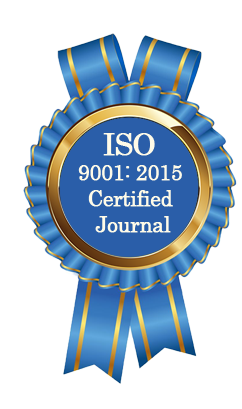| All | Since 2020 | |
| Citation | 105 | 60 |
| h-index | 4 | 4 |
| i10-index | 3 | 2 |
WJAHR Citation 
Login
News & Updation
Best Article Awards
World Journal of Advance Healthcare Research (WJAHR) is giving Best Article Award in every Issue for Best Article and Issue Certificate of Appreciation to the Authors to promote research activity of scholar.
Best Article of current issue
Download Article : Click here
Indexing
Abstract
REVIEW OF ANIMAL LISTERIOSIS, DIAGNOSIS, ETIOLOGY AND ITS PUBLIC HEALTH
Dr. Haftom Abay Hagos*
ABSTRACT
Listeriosis is a sporadic bacterial infection that affects a wide range of animals, including people and birds. It is seen worldwide, more frequently in temperate and colder climates. There is a high incidence of intestinal carriers. Encephalitis or meningoencephalitis in adult ruminants is the most frequently recognized form. They are 7 types of listeria species but L.monocytogenes is the only pathogenic for both humans and animals. The aim of this manuscript was to review and compile the available literature of listeriosis in animals, diagnosis, etiology and its public health. The major clinical forms of listeriosis in cattle are encephalitis, abortion, Mastitis, Ophthalmitis, iritis and keratoconjunctivitis. There are two main forms of illness in human associated with L.monocytogenes infection such as invasive (fatal form) and non-invasive forms (mild form). People at risk of invasive listeriosis include pregnant women and their fetuses, newborn babies, the elderly and immune compromised individuals (such as cancer, transplant and HIV/AIDS patients). Every effort should be made to produce silage of good quality, with early cutting of grass, minimal contamination with soil or feces and ensuring optimal anaerobic fermentation, which will insure that the pH falls below 5.0; at that level, growth of Listeria species is inhibited. People susceptible for acquiring listeriosis should not consume unpasteurized milk and milk products. In the world, this disease is becoming an emerging bacterial disease, with low incidence but high case fatality rate. Animal food products serve as important source of many food pathogens including Listeria monocytogenes. The bacterium is ubiquitous in the nature and which is rod shaped, Gram-positive, motile and psychotropic and has been isolated from a variety of foods (Milk and meat products) and environmental sources like soil, dust, water, sewage, decaying vegetation, etc.
[Full Text Article] [Download Certificate]
